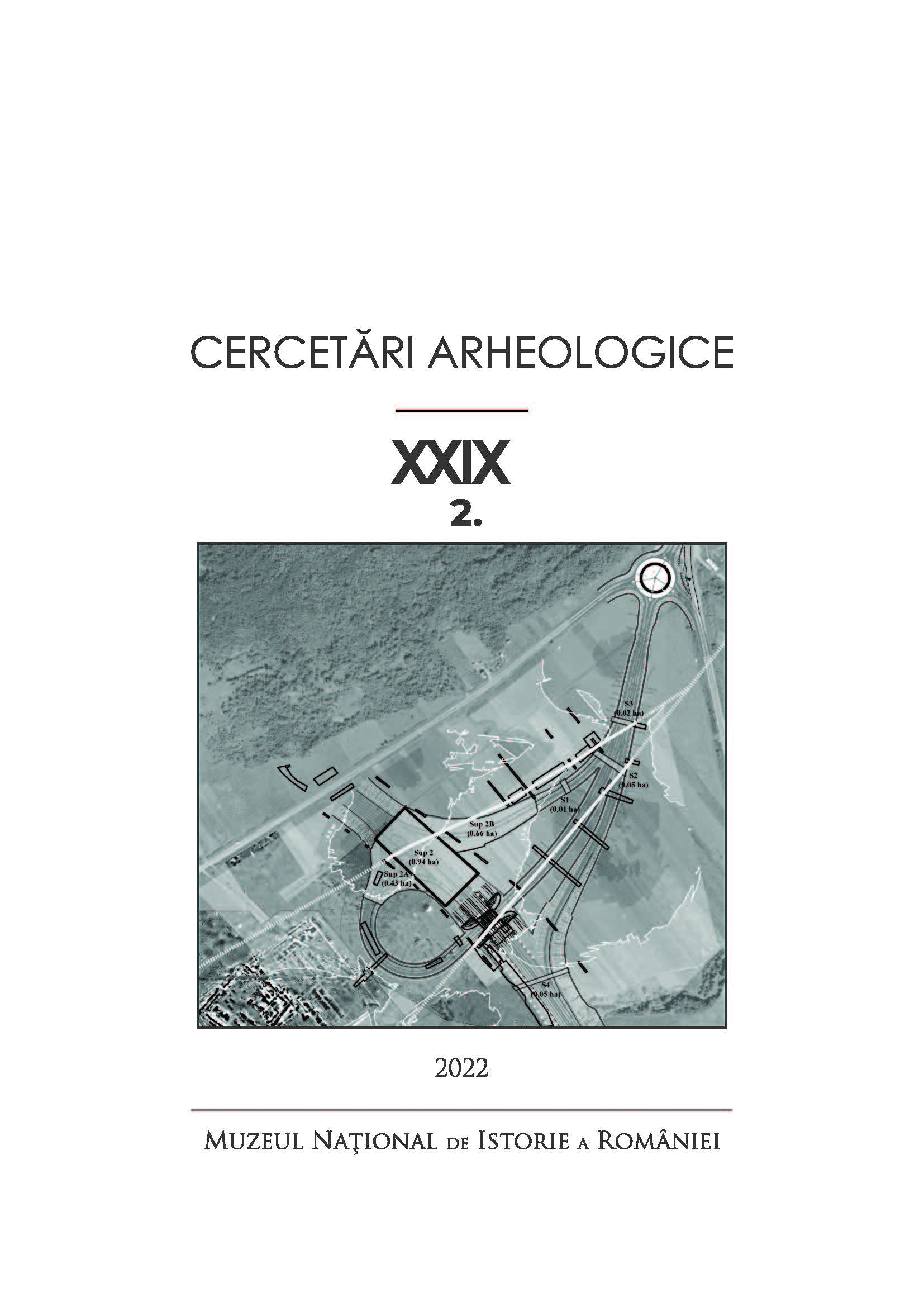Un voievod valah redat pe cahle placă descoperite la Văleni, jud. Dâmboviţa (sf. sec. XIV- începutul sec. XV) O filă din repertoriul iconografic al cahlelor medievale româneşti
A Wallachian Voivode rendered on Stove Tiles discoveries in Valeni, Dâmboviţa county (end of the 14th century – beginning of the 15th century). A tab from the iconographic repertoire of Romanian medieval stove tiles
Author(s): Maria-Venera RădulescuSubject(s): History, Archaeology, 13th to 14th Centuries, 15th Century
Published by: MUZEUL NAȚIONAL DE ISTORIE A ROMÂNIEI
Keywords: stove tiles; overcoat; mantle; crown; lance; dagger;
Summary/Abstract: The study presents two fragmentary, unglazed stove tiles, discovered by chance, in 1873, in Văleni, a small town located in the North-Eastern part of the Getic Plateau, at the foot of the Carpathian Mountains, in the valley of the Dâmboviţa River. The composition depicts a pedestrian character, seen from the front, crowned, draped in overcoat, richly ornamented, wearing a fur mantle over his shoulders. With his right hand he holds a lance, in a vertical position, and in his left hand, raised, he holds a dagger. The artistic creation is the work of a folk craftsman. Based on stylistic analogies with other artifacts, the models that inspired the creation of these pieces could be determined. Thus, in the effigies of ducats issued by Mircea the Elder (1386-1418), the voivode is represented crowned, wearing an overcoat and mantle, holding a lance with his right hand, in a vertical position. For the border of the Văleni tiles, the folk craftsman was inspired by the border of the tombstone of voivode Nicolae Alexandru Basarab (1352-1364), which is located in the royal church at the Negru Vodă monastery from the town of Câmpulung Muscel. Based on these data, it can be deduced that the tiles from Văleni were executed in the period between the end of the 14th century and the first years of the next century. In the composition, we assume that the voivode Mircea the Elder is represented.
Journal: Cercetări Arheologice
- Issue Year: XXIX/2022
- Issue No: 2
- Page Range: 687-698
- Page Count: 12
- Language: Romanian

